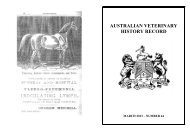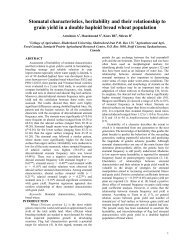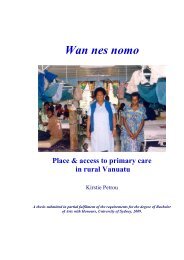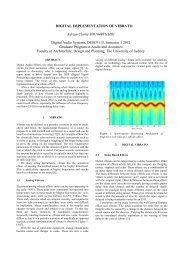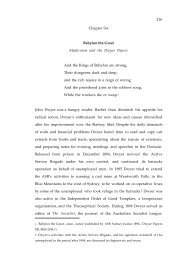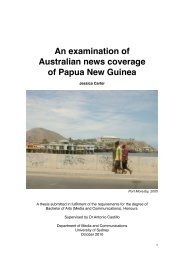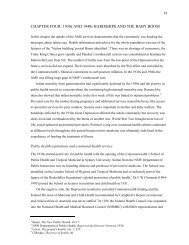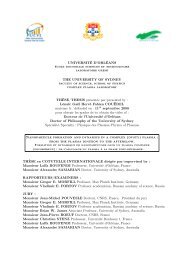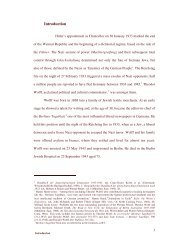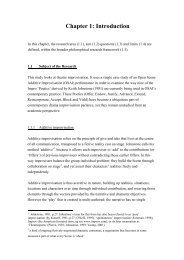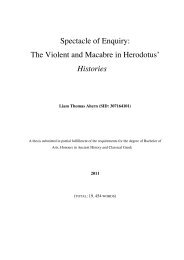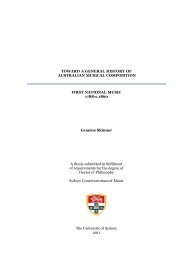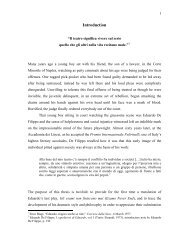journal of digital research & publishing - The Sydney eScholarship ...
journal of digital research & publishing - The Sydney eScholarship ...
journal of digital research & publishing - The Sydney eScholarship ...
Create successful ePaper yourself
Turn your PDF publications into a flip-book with our unique Google optimized e-Paper software.
FGH'IJ- KL@ M ' J N ' ! O P O 9@M'K Q 3 Q @ K ( R'S'G-TMO3 ROLP<br />
N3,3K$"%*& 3>%& 7D6%"& "%,#%56%8& D7>& 6+%$>& 5(#6(>3#& *$,"$453"5%& 3*& 3& '>7#$45& 0%8$(0&<br />
for communication. <strong>The</strong>y are vectors <strong>of</strong> pleasure, they encourage the acquisition <strong>of</strong><br />
knowledge, they may play an important role in the formation <strong>of</strong> identity, they are open to<br />
>%*$*63"6&>%38$",*S&6+%9&%3*$#9&%"570'3**&3"8&$"57>'7>36%&C%P$)#%&3"8&I3>9$",&57"8$6$7"*&<br />
<strong>of</strong> consumption and production, and they form a readily accessible community focus<br />
(Holmes, 2008). Innovative magazines that have diverged from the traditional role <strong>of</strong><br />
the coupling <strong>of</strong> imagery and text and consumer marketing, to promote cultural trends<br />
and social communities in which the publication becomes a work <strong>of</strong> art itself with special<br />
consideration for paper stock, layout, imagery and typography – the work’s print marking<br />
6+%&4"3#&*63,%&$"&6+%&57"5%'6(3#&3"8&3>6$*6$5&'>75%**M&<br />
Two examples <strong>of</strong> such publications, Omnibus News and FILE magazine, have used the<br />
mainstream media format <strong>of</strong> a magazine to produce an artwork in itself and experiment<br />
with the social processes <strong>of</strong> disseminating information. In 1969 three aspiring underground<br />
magazine publishers (Thomas Niggl, Christian d’Orville, and Heimrad Prem) in Munich<br />
proposed an invitation to the community to submit a contribution (illustration, writing,<br />
poetry, photography) to their publication, titled Omnibus News. Each contributor was<br />
responsible for the cost <strong>of</strong> generating their submission and in return they were given ten<br />
57'$%*& 7D& 6+%& 4"3#& '>78(56& 67& *%##& 7>& ,$I%& 3G39M& b()#$*+%8& $"& E^n^S& 6+%& '()#$536$7"& G3*&<br />
200pages long, a substantial publication (Perkins, 2005). Omnibus News restructured<br />
the formal idea <strong>of</strong> a periodical or magazine, inverting the traditional relationship <strong>of</strong> the<br />
editor and contributor. <strong>The</strong> purpose <strong>of</strong> the project was to ensure distribution by creating<br />
multiple distribution sources. <strong>The</strong> magazine promoted concepts <strong>of</strong> networking, inclusion,<br />
communication and media, that are still relevant and operational in <strong>digital</strong> media.<br />
Another example <strong>of</strong> the use <strong>of</strong> magazines to promote and extend audiences is the 1971<br />
publication titled FILE magazine. <strong>The</strong> magazine began as a product <strong>of</strong> an art collective<br />
called General Idea, developed as a soundboard for artistic communities in Canada<br />
(Gangadharan, 2009), continuing the project <strong>of</strong> mail art. FILE promoted the relational<br />
aesthetic by regularly compiling and <strong>publishing</strong> an artist’s directory and request list for<br />
artworks to which readers had public access, to connect and interact with others.<br />
XF



